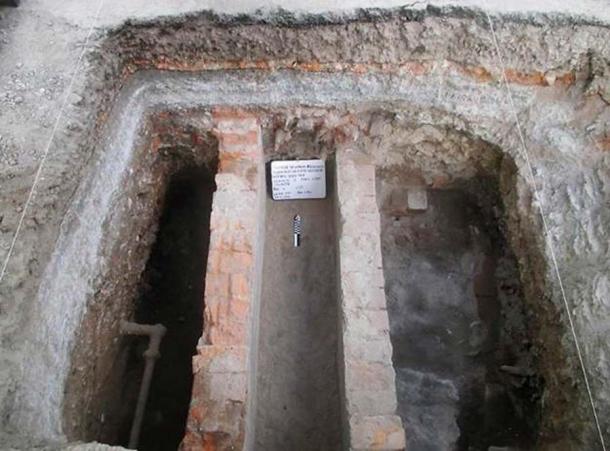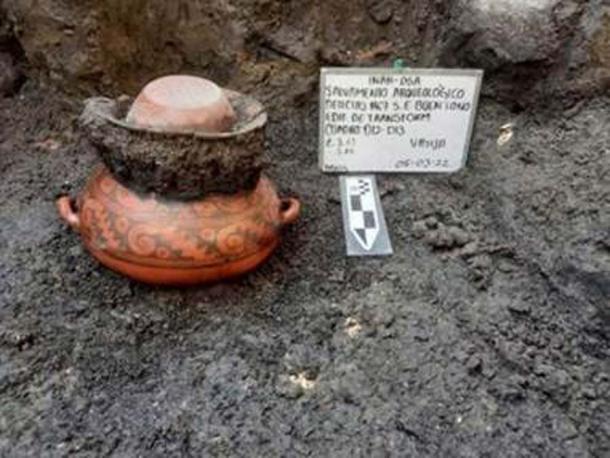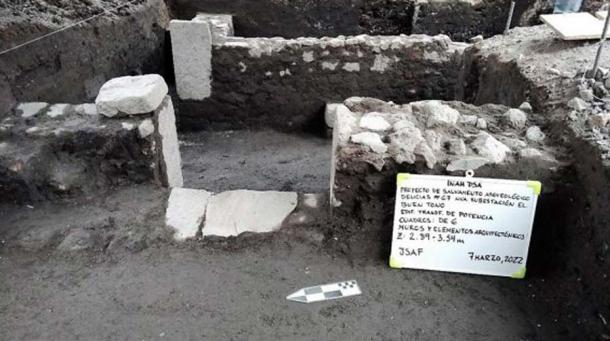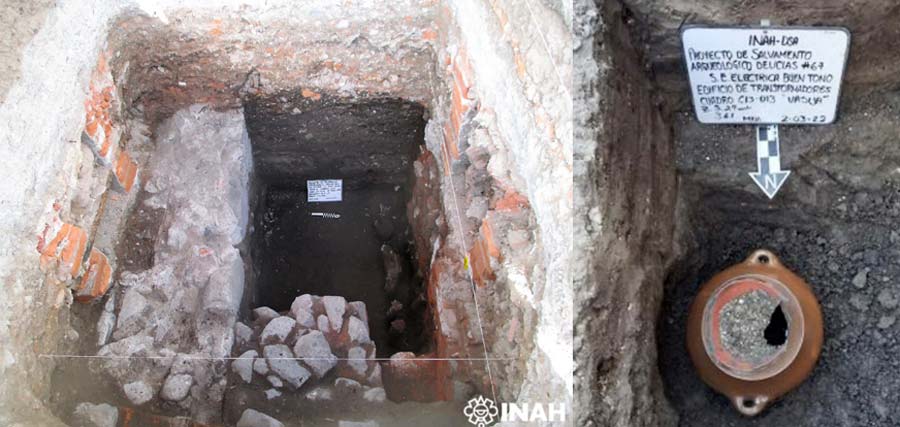Aztec House and Floating Gardens Discovered Under Mexico City
Archaeologists performing excavations in Mexico City’s Centro neighborhood dug up more than they bargained for when they uncovered the hidden ruins of an ancient Aztec dwelling, which had apparently been occupied for many generations in both the pre- and post-Spanish conquest eras. Experts from Mexico’s National Institute of Anthropology and History (INAH), which sponsored the excavations, believe the residential building was likely constructed during the Aztec Empire’s late Postclassical period, which covered the years from 1200 to 1521 AD.
This eye-opening discovery was both fortunate and extraordinary, as the archaeologists were not looking for Aztec ruins. Their excavations were ordered as a precautionary measure, in advance of an electrical power substation construction project that could damage undiscovered underground ruins.
Nevertheless, archaeologists who explore the underground regions of Mexico City are always hopeful that something interesting might turn up. Mexico’s current capital was built directly on top of the Aztec Empire’s spectacular capital city of Tenochtitlan, and that means Aztec ruins could conceivably be uncovered during any excavation.
- The Stolen Treasure of Montezuma
- Archaeologists in Mexico Unearth Evidence That Aztecs Resisted Spanish Rule Even In Death

Part of the Aztec house, which is estimated to cover 4,300 square feet (400 square meters). (INAH)
A Modest Aztec House, and Much, Much More
The Aztec dwelling found by the INAH archaeologists is of modest size, with a total footprint of approximately 4,300 square feet (400 square meters). It was made from adobe (sun-dried brick made of clay), as was customary in the Aztec culture. Based on an exploration of the surrounding area it appears the adobe house was located on the border of two residential neighborhoods, in a city that may have been home to as many as 400,000 people during its most populated phase.
Digging down beneath the building’s thick floors, the archaeologists found two funerary vessels that held the skeletal remains of two infants. They found several other burials as well, along with a mixture of burial goods that notably included spinning tools and an Aztec spindle whorl that would have been used to by experienced clothes makers.

One of the funerary urns found at the Mexico City site. (INAH)
The latter items were likely the property of people who lived in the dwelling and were buried beneath it when they died. It is also possible that the structure was built over the top of an older Aztec cemetery, either intentionally or accidentally.
In addition to textile manufacturing, other craftwork apparently took place at the site of the ancient dwelling. The INAH archaeologists unearthed items that suggested the structure had at some point been repurposed as both a ceramic pottery workshop and a saddlery, with the latter referring to an operation that produced equipment used by horse riders. The archaeologists believe these activities were undertaken on behalf of Spanish occupiers during the colonial era of the 16th and 17th centuries.
Digging in and around the residential structure, the archaeologists also discovered a most unique item. This was a nearly two-foot (60-centimeter) tall stone statue of a man in a loincloth (an athlete?) apparently hurling some type of object. The decorative statue was unpolished, indicating that its maker had been interrupted and could not finish his work for some reason. The researchers speculate that the sculptor might have been working on this statue at the time of the Spanish conquest, and had perhaps hidden it quickly to prevent it from falling into the wrong hands.
- On The Edge Of A Blade: Grasping Aztec Violence and Human Sacrifice
- The Lost City of Aztlan – Legendary Homeland of the Aztecs

Part of the adobe building. (INAH)
In the late Postclassic period of the Aztec Empire, the area where the recent excavations took place functioned as both a residential neighborhood and an agricultural center. The INAH archaeologists know this because in addition to the adobe dwelling, they also found that remains of several channels or canals that would have been navigated by boats. They also unearthed an ancient example of a jetty, a platform where boats can stop to load or unload cargo.
The channels and the jetty would have been installed to meet the needs of Aztec farmers using the chinampa method of plant cultivation. Practitioners of this innovative style of Aztec agriculture grew crops on small floating gardens or islands that were created on the still waters of shallow lakes or ponds and could be easily accessed by boat.
Intriguingly, the INAH archaeologists found evidence to suggest the site of the Aztec dwelling was still in use three centuries after the Aztec Empire had fallen.
According to archaeologist Alicia Bracamontes Cruz, she and the other researchers uncovered remnants of what appear to have been public baths, which would have been installed in the 19th century. These remnants included bathroom-style tile floors and a water drainage system. This type of public bath would have been reserved for use by wealthy elites and would not have been open to members of the general public.
Resurrecting the Aztec Culture, One Excavation at a Time
There is still much excavation work that needs to be done to prepare for the construction of the new power substations. INAH archaeologists are optimistic of finding more ruins and artifacts from Aztec times, which seems to be a realistic hope given what has already been discovered.
Much was lost when the Spanish conquerors invaded and ultimately destroyed the Aztec Empire and its densely populated, culturally sophisticated, and stunningly beautiful capital city of Tenochtitlan. But archaeologists specialize in resurrecting lost worlds, as the latest round of excavations over the site of ancient Tenochtitlan has already demonstrated.
Top image: Excavated walls of the Aztec house, and one of the funerary vessels. Source: INAH
By Nathan Falde




















Comments
What method was used to determine that the baths were for the wealthy elites and not the general public?
The Aztecs weren’t stone masons. Like all the other Americans of their day, they resettled pre-existing ruins. They also had no demonstrated metal working capabilities. All that gold they had was found down in the pre-existing caverns (stone-age living spaces), along with the bones of those of the prior civilization, decimated in some much earlier catastrophe.
Nobody gets paid to tell the truth.